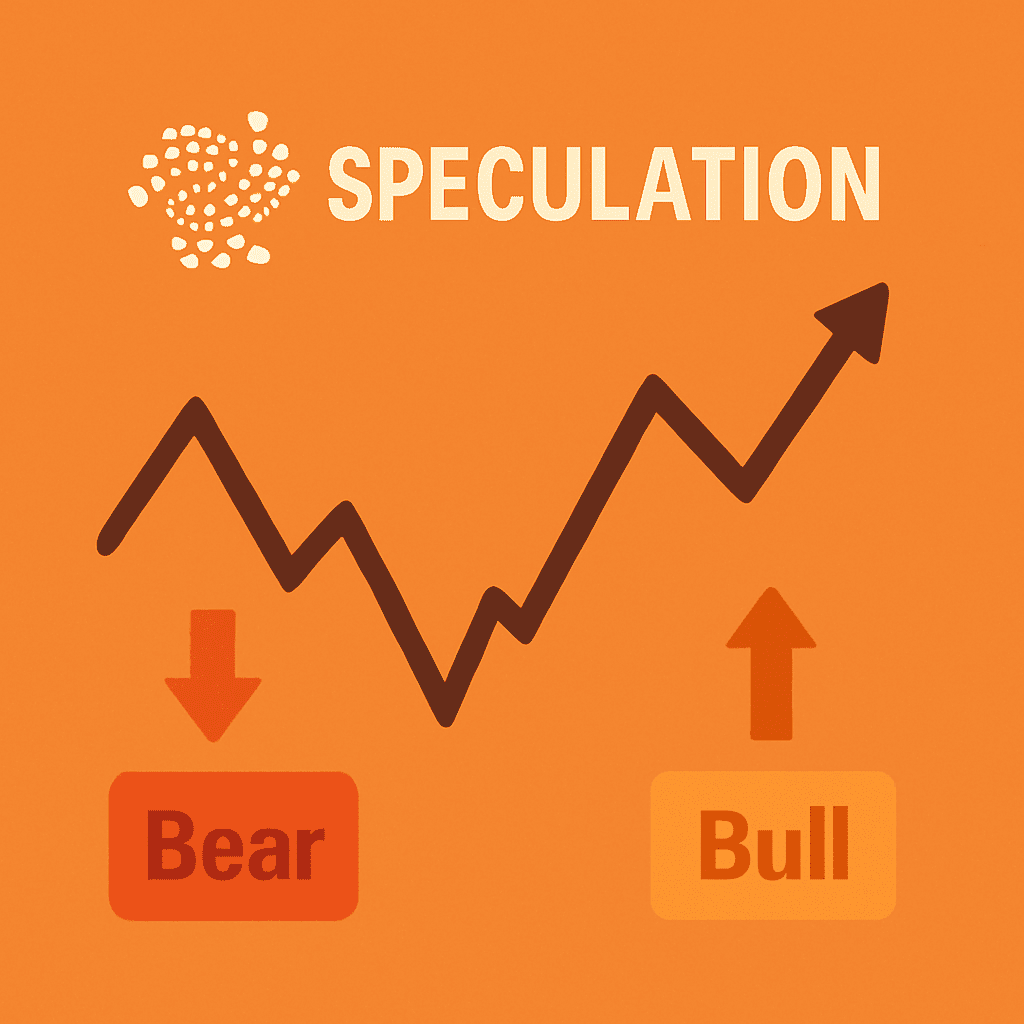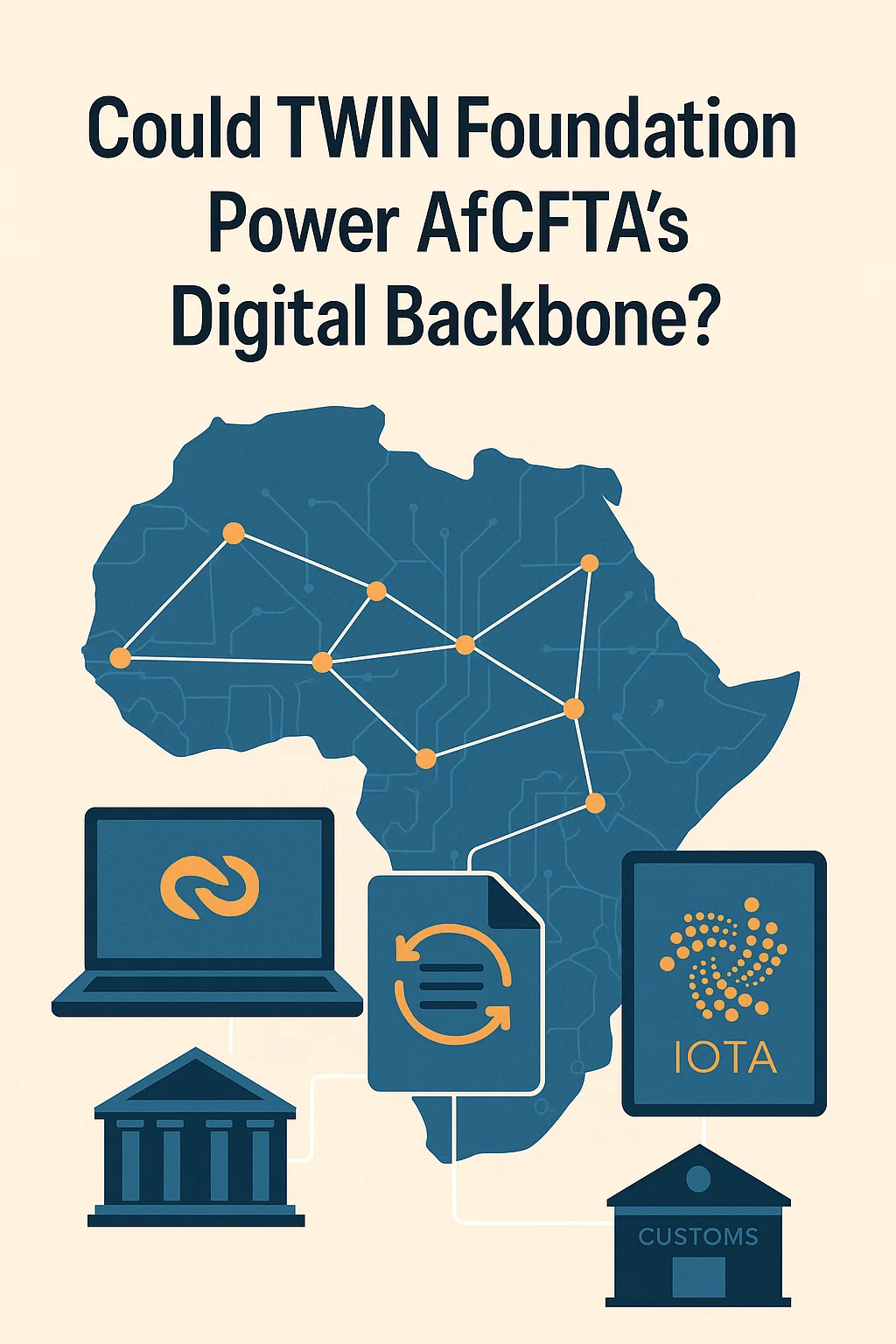IOTA Price Prediction 2026: How Real-World Adoption Could Drive Value
Data-driven analysis of IOTA's 2026 price potential based on Move smart contracts, Trust Framework adoption, and enterprise partnerships. Not financial advice.

Introduction
As we approach 2026, IOTA stands at a pivotal juncture. Unlike many blockchain projects focused solely on DeFi speculation, IOTA has built a foundation of real-world enterprise adoption through partnerships with the World Economic Forum, European Commission, and tokenization platforms like Realize in Abu Dhabi. With the launch of Move-based smart contracts and an expanding Trust Framework, the question isn't whether IOTA has utility—it's how this utility translates to token value.
This analysis examines three scenarios for IOTA's price trajectory through 2026, based on current market positioning, technological developments, and adoption metrics. We'll explore what could drive price appreciation, what risks exist, and what key indicators to monitor.
Disclaimer: This article contains speculative analysis and price predictions for informational and educational purposes only. This is NOT financial advice. Cryptocurrency investments carry significant risk. Always do your own research and consult with a qualified financial advisor before making any investment decisions. Past performance does not guarantee future results.
Current Market Context
IOTA Price & Market Metrics (October 2025)
- Market Position: IOTA has transitioned from a DAG-based protocol to a Move-based Layer-1 blockchain with EVM compatibility
- Key Differentiation: Focus on real-world enterprise adoption versus purely speculative DeFi
- Staking Participation: Growing validator network with flexible staking rewards
- Enterprise Momentum: Active partnerships with TWIN (Trade Worldwide Information Network), Realize tokenization platform, European Commission projects, and World Economic Forum initiatives
Recent Developments
- Move Smart Contract Integration (2024-2025): IOTA adopted the Move programming language, offering enhanced security and resource-oriented smart contract design alongside EVM compatibility
- Trust Framework Launch: Comprehensive suite including IOTA Identity, Hierarchies, Notarization, Tokenization, and Gas Station for enterprise-grade decentralized applications
- Real-World Showcases:
- TWIN: Digital platform enabling global supply chains to share data securely on IOTA
- Realize: Abu Dhabi-based tokenization platform launching Middle East's first tokenized T-Bills Fund
- MultiKnip: Digital token platform driving purpose and value through incentivization
- Business Innovation Program: Active grants and support for builders deploying real-world solutions
Market Sentiment Indicators
- Developer Activity: Strong focus on Move ecosystem development and EVM tooling
- Enterprise Engagement: Multiple lighthouse projects with government and institutional partners
- Staking Adoption: Growing validator participation indicates network confidence
- Competitive Position: Positioned uniquely between traditional enterprise blockchain and modern Layer-1 DeFi ecosystems
Analysis & Methodology
Fundamental Analysis Approach
Our prediction model considers:
- Real-World Adoption Metrics: Number of active enterprise partnerships, transaction volume from production use cases
- Technology Milestones: Move smart contract adoption, Trust Framework utilization, EVM bridge activity
- Network Growth: Validator count, staking participation rate, active addresses
- Competitive Positioning: IOTA vs. other enterprise-focused L1s (Hedera, Algorand, XDC) and Move-based chains (Sui, Aptos)
- Market Cycles: Historical Layer-1 performance during bull/bear cycles, Bitcoin correlation patterns
Technical Considerations
While this analysis focuses primarily on fundamentals given IOTA's enterprise adoption narrative, technical factors include:
- Historical support/resistance levels
- Layer-1 token performance during previous market cycles
- Correlation with Bitcoin and general crypto market sentiment
- Trading volume and liquidity trends
Data Sources
- IOTA Foundation official website - Enterprise partnerships and technology updates
- IOTA Documentation - Technical specifications and developer resources
- Blockchain explorer data - On-chain metrics, staking participation
- TWIN Platform - Real-world usage statistics
- Market data providers - Historical price data and market cap trends
Prediction Scenarios for 2026
🐂 Bullish Scenario: Enterprise Adoption Accelerates (Probability: 25%)
Price Target: $2.50 - $4.00 by Q4 2026
Required Conditions:
- At least 3-5 major enterprise deployments go live with significant transaction volume
- TWIN or similar platform processes $100M+ in tracked value
- Tokenization platforms like Realize successfully launch and scale asset tokenization
- Move smart contract ecosystem attracts 500+ active developers
- General crypto market enters bull cycle (Bitcoin above $100K)
- IOTA staking participation reaches 60%+ of circulating supply
Supporting Factors:
- Real-World Revenue: Unlike purely speculative chains, enterprise adoption could drive sustained token demand through gas fees and tokenization activity
- Trust Framework Moat: Identity, notarization, and hierarchies create switching costs for enterprises
- Move Language Advantage: Security-focused smart contracts attract institutional developers concerned about audits and compliance
- Energy Efficiency: Critical for ESG-conscious enterprises and government partnerships
- Tokenomics: If significant supply is staked, circulating supply compression could amplify price movements
Staking Impact: At $3.00 IOTA with current ~7-10% staking APY, a 10,000 IOTA stake would generate 700-1,000 IOTA annually ($2,100-$3,000 in rewards). Use our APY Calculator to model different price scenarios and optimize your staking strategy.
😐 Base Case Scenario: Steady Growth (Probability: 50%)
Price Range: $0.80 - $1.50 by Q4 2026
Key Assumptions:
- 1-2 enterprise showcases successfully deploy but adoption is gradual
- Move developer ecosystem grows but doesn't reach critical mass yet
- Tokenization use cases launch but scale slowly
- Crypto market remains neutral to slightly positive
- Staking participation reaches 40-50% of supply
- Competitive pressure from other enterprise L1s remains high
Most Likely Outcome:
IOTA continues executing its enterprise-focused strategy with measurable progress but not explosive growth. Real-world adoption takes time—enterprises move slowly, requiring compliance, integration, and pilot programs before full deployment. The Trust Framework gains traction in specific verticals (supply chain, digital identity) but broad adoption remains 2-3 years away.
In this scenario, IOTA maintains its position as a credible enterprise blockchain with differentiated technology, but token price appreciation is moderate, driven more by overall crypto market sentiment than IOTA-specific catalysts.
What This Means for Stakers:
Even with modest price appreciation, staking rewards provide consistent returns. At $1.20 IOTA with 8% APY, a 10,000 IOTA stake generates 800 IOTA annually (~$960 in rewards). Over multiple years with compounding, this builds meaningful value. Track your performance with our Staking Tracker.
🐻 Bearish Scenario: Adoption Delays & Market Headwinds (Probability: 25%)
Price Target: $0.30 - $0.60 by Q4 2026
Risk Factors:
- Enterprise partnerships fail to materialize into production deployments
- Move ecosystem adoption is slower than expected; developers stick with established chains
- Crypto market enters prolonged bear cycle
- Regulatory challenges impact tokenization use cases
- Competitor L1s capture enterprise market share
- General skepticism about "real-world adoption" narrative persists
What Could Go Wrong:
- Execution Risk: Enterprise blockchain history is littered with ambitious partnerships that never scaled (IBM Hyperledger, many enterprise Ethereum projects). IOTA could face similar adoption friction.
- Market Correlation: If Bitcoin enters a bear market, even fundamentally strong projects suffer. IOTA's enterprise focus may not insulate it from broader crypto sentiment.
- Technology Risk: Move language is newer; smart contract bugs or security issues could damage reputation.
- Competition: Hedera has similar enterprise focus with established partnerships. Sui/Aptos have better-funded Move ecosystems. XDC targets trade finance. IOTA must differentiate convincingly.
Mitigation Strategy:
Even in bearish conditions, staking provides passive income and demonstrates long-term network commitment. At $0.45 IOTA with 7% APY, a 10,000 IOTA stake generates 700 IOTA annually (~$315). While nominal returns are lower, percentage gains remain, and you're positioned for recovery. Learn about risk management and compounding strategies to maximize long-term returns regardless of short-term price volatility.
Key Factors to Watch
Short-Term Catalysts (Q4 2025 - Q1 2026)
- TWIN Transaction Volume: Monitor how much value is being tracked through the Trade Worldwide Information Network. Public metrics on supply chain data processed.
- Realize Tokenization Launch: Success of Abu Dhabi's first tokenized T-Bills Fund on IOTA. Asset under management (AUM) growth.
- Move Developer Adoption: Number of active developers, smart contracts deployed, total value locked (TVL) in Move-based dApps.
- Validator Growth: Increasing validator count and staking participation signals network confidence.
- Bitcoin Market Cycle: BTC price action often leads altcoin cycles with 1-2 month lag.
Medium-Term Drivers (2026)
- Enterprise Production Deployments: Moving from pilots to live production systems with measurable transaction volume and revenue.
- Trust Framework Adoption Metrics: Number of digital identities created, notarization transactions, tokenized assets on-chain.
- Ecosystem Grants Impact: Success rate of Business Innovation Program projects in achieving product-market fit.
- Cross-Chain Integrations: Bridges and interoperability with major chains (Ethereum, Solana, etc.) for asset movement.
- Regulatory Clarity: How tokenization regulations evolve globally, especially in EU and Middle East markets where IOTA has partnerships.
Long-Term Trends (2026+)
- Institutional Crypto Adoption: Whether large institutions embrace tokenized real-world assets (RWAs) as a major use case.
- Energy Efficiency Premium: If ESG concerns drive enterprise blockchain selection, IOTA's efficiency becomes competitive advantage.
- Move Language Maturity: Whether Move becomes a widely-accepted smart contract language beyond Sui/Aptos ecosystem.
- Decentralization vs. Enterprise Tradeoff: How market values permissionless L1s with enterprise features versus permissioned consortium chains.
Metrics to Monitor Regularly
- On-Chain Activity: Daily active addresses, transaction count, staking ratio
- IOTA/BTC Ratio: Measures IOTA's performance relative to crypto market leader
- Enterprise Announcement Quality: Pilot vs. production, transaction volume disclosed, revenue potential
- Validator Distribution: Geographic and entity diversity (decentralization health)
- Developer Community Size: GitHub activity, forum participation, hackathon entries
Risk Assessment
Market & Macroeconomic Risks
Crypto Volatility: Layer-1 tokens are highly correlated with Bitcoin. A prolonged bear market (BTC below $40K) would likely pressure IOTA regardless of fundamentals.
Regulatory Uncertainty: Tokenization and digital identity are regulatory minefields. Adverse regulations in key markets (EU, UAE, US) could significantly slow adoption.
Macroeconomic Conditions: Rising interest rates make risk assets less attractive. Recession could freeze enterprise blockchain budgets.
IOTA-Specific Risks
Execution Risk: Enterprise adoption is notoriously difficult. Many blockchain projects have pivoted away from enterprise focus due to slow sales cycles and integration challenges.
Technology Competition:
- Hedera: Established enterprise partnerships (Google, IBM, Boeing) and governance council
- Sui/Aptos: Better-funded Move ecosystems with strong developer communities
- Algorand: Similar enterprise positioning with proven DeFi capabilities
- XDC Network: Focus on trade finance with institutional partnerships
Tokenomics Concerns: If enterprise use cases don't generate sufficient token demand (transactions paid in stablecoins via Gas Station, for example), supply/demand dynamics may not favor price appreciation despite adoption.
Centralization Perception: Enterprise focus sometimes conflicts with crypto ethos of decentralization. If IOTA is perceived as "too centralized," it may struggle to attract retail and DeFi users.
External Factors Beyond IOTA's Control
Ethereum L2s: If Ethereum Layer-2 solutions become cheap enough and sufficiently scalable, enterprises may choose familiar Ethereum ecosystem over alternative L1s.
Government Blockchain Initiatives: Central bank digital currencies (CBDCs) or government-backed blockchain platforms could compete for the same enterprise use cases IOTA targets.
Black Swan Events: Exchange hacks affecting IOTA, smart contract exploits, key team departures, or broader crypto market crisis (FTX-style collapse of major exchange).
Risk Mitigation Strategies for Stakers
- Diversify Validators: Don't stake 100% with a single validator. Spread across 3-5 high-quality validators. Check our FAQ for validator selection criteria.
- Only Stake What You Can Lock: IOTA staking has unbonding periods. Don't stake emergency funds.
- Monitor Validator Performance: Poor validator uptime reduces rewards. Use our Staking Tracker to monitor your validator's performance metrics.
- Understand Correlation: If you hold other crypto assets, recognize that diversification within crypto is limited due to high correlation. True diversification requires non-crypto assets.
- Long-Term Perspective: Staking is best suited for long-term holders who believe in IOTA's vision and can weather volatility. Compounding rewards over 3-5 years can significantly offset short-term price fluctuations.
Investment Thesis: Why IOTA Could Outperform
While maintaining appropriate skepticism, several factors make IOTA an interesting speculation for 2026:
1. Real-World Revenue Potential
Unlike many altcoins that are purely speculative, IOTA's enterprise partnerships could generate actual revenue through transaction fees, tokenization activity, and network usage. If TWIN processes billions in tracked supply chain value, or Realize tokenizes hundreds of millions in real-world assets, the token demand becomes tied to real economic activity—not just speculation.
2. Undervalued Relative to Narrative
Projects with far less real-world traction often command higher valuations based purely on narrative and community hype. If IOTA successfully executes and the market begins valuing "real-world adoption" more highly, there's significant upside potential as the narrative catches up to reality.
3. Move Language Positioning
Being one of the few non-Sui/Aptos chains to adopt Move could attract developers seeking Move's safety benefits without the crowded ecosystems of those platforms. First-mover advantage in "Move for enterprises" niche.
4. Energy Efficiency Moat
As ESG becomes a more important consideration for institutional investors and enterprises, IOTA's energy-efficient design is a genuine competitive advantage over Proof-of-Work chains and even some Proof-of-Stake competitors.
5. Tokenomics with Staking
If staking participation reaches 50-60% of supply, effective circulating supply decreases significantly. Combined with any increase in demand from usage, this could create favorable supply/demand dynamics.
Counter-Arguments to Consider
Skeptic's View: "Enterprise blockchain has been promised for years. Why will IOTA be different?"
Fair point. History shows enterprise adoption is slow and many projects over-promise. However, IOTA has moved beyond MOUs and pilots—TWIN is live, Realize is deploying tokenized assets. The question is scale, not existence.
DeFi Maximalist View: "Real-world adoption doesn't matter. Crypto should be permissionless finance, not enterprise databases."
Also valid. If the crypto market continues to value speculation and DeFi over enterprise use cases, IOTA may underperform more "degenerate" plays. This analysis assumes the market will eventually value real economic activity.
Technology Risk View: "Move is unproven. Smart contract bugs could destroy the chain."
True. All smart contract platforms face this risk. Move's resource-oriented design aims to reduce certain vulnerability classes, but it's newer and less battle-tested than Solidity. Audits and security practices will be critical.
Conclusion
Summary of Scenarios
- Bullish ($2.50-$4.00): Enterprise adoption accelerates, multiple production deployments, bull market backdrop. Probability: 25%
- Base Case ($0.80-$1.50): Steady progress, gradual adoption, neutral market. Probability: 50%
- Bearish ($0.30-$0.60): Adoption delays, bear market, execution challenges. Probability: 25%
Probability-Weighted Target
Based on these scenarios, a probability-weighted price target for Q4 2026 would be approximately $1.20-$1.80, reflecting the higher likelihood of the base case with tail risks in both directions.
What to Watch in Coming Months
The next 6-12 months will be critical for IOTA. Key indicators:
- TWIN transaction volume - Is it growing month-over-month?
- Realize tokenization - Do they successfully launch and attract AUM?
- Move developer ecosystem - Are developers building real applications?
- Validator growth - Is the network decentralizing and growing?
- Bitcoin market cycle - Are we entering a bull market phase?
If 3+ of these are positive by Q2 2026, the bullish scenario becomes more likely. If most are stagnant or negative, expect base case or bearish outcomes.
For IOTA Stakers and Holders
Regardless of price prediction, staking provides several benefits:
- Passive Income: 7-10% APY in IOTA tokens, regardless of USD price
- Network Support: Your stake helps secure the network and demonstrates commitment
- Compounding Returns: Automatic reward compounding over time builds position size
- Alignment: If you believe in IOTA's long-term vision, staking aligns incentives
Take Action:
- Calculate potential returns at different price points with our APY Calculator
- Monitor your staking performance and validator metrics with our Staking Tracker
- Understand compounding effects over multi-year timeframes with our Compounding Calculator
- Learn about staking mechanics and best practices in our FAQ
Final Thoughts
IOTA's real-world adoption narrative is compelling and differentiated. If execution matches ambition, there's significant upside potential. However, enterprise blockchain is notoriously difficult, and market sentiment often trumps fundamentals in crypto.
This analysis presents multiple scenarios because the future is uncertain. Markets are unpredictable, adoption timelines are unclear, and technology risks exist.
The responsible approach: Do your own research, understand the risks, only invest what you can afford to lose, and if you believe in the long-term vision, consider staking as a way to earn passive income while supporting the network.
The next 12-18 months will tell us whether IOTA's enterprise blockchain vision becomes reality or remains an aspirational narrative.
What's your IOTA price prediction for 2026? Share your analysis on X (Twitter) or join the discussion in the IOTA community. Remember: this is speculation, not financial advice.
About the Analysis: This prediction is based on publicly available information as of October 31, 2025. Market conditions, technology developments, and enterprise adoption timelines may change. This analysis will be updated quarterly with progress tracking.
Last Updated: October 31, 2025
Written by IOTA Staking Team
Expert in IOTA staking, blockchain technology, and DeFi strategies. Providing actionable insights to help you maximize your staking rewards.
Related Articles

Beyond the Hype: What IOTA's AfCFTA Role Could Really Mean
A speculative look at how IOTA, TWIN, and open-source DLT could build the digital trust layer for the AfCFTA, moving beyond the pilot phase.

US-Vietnam IOTA Trade Deal: Q4 2025 Speculation Analysis
Analyzing leaked reports of potential US-Vietnam agreements with IOTA for digital trade traceability. Bull, base, and bear scenarios examined.

IOTA at 10: The Decade-Long Bet on Bringing the Real World Onchain
After a decade of building, IOTA is emerging as the blockchain backbone for global trade. Here's how $33 trillion in commerce is going digital.
